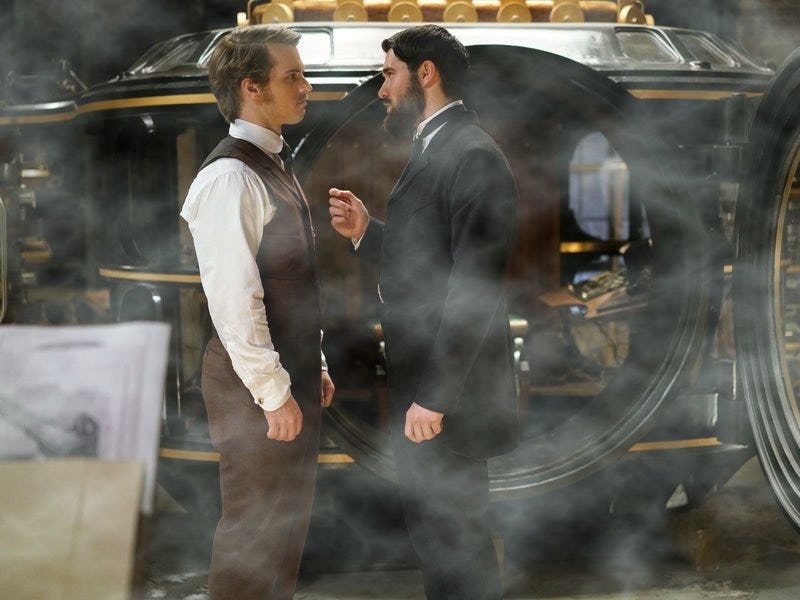
Most of the science in ABC’s new series Time After Time is questionable at best, but the frosted window panes on H.G. Wells’s miraculously functioning time machine hint that the showrunners aren’t completely oblivious to established time travel theories. The show’s pilot, which premiered on Sunday, made it clear that firing up the machine makes the temperature drop, condenses exhaled breaths, and freezes water into ice. Albert Einstein would have been proud: his theory of relativity proposed that traveling through time was possible — and that doing so would have pretty frigid implications.
There are many theories about how time travel might exist, but they are all anchored in Einstein’s suggestion that time is a fourth dimension. This theory allows us to view space-time as a mesh-like fabric that bends when a thing of great mass — like a planet — lands on it. It’s thought that when the fabric of space-time bends back far enough, “time lines turn back on themselves to form a loop, technically known as a ‘closed time-like curve,’” according to Space.com. It’s been suggested that the space inside these doughnut-shaped time loops is really, really cold.
The volume within a time loop, formed when the fabric of space-time closes in on itself, is predicted to be very cold.
In his book Time Travel in Einstein’s Universe: The Physical Possibilities of Travel, Princeton University astrophysicist J. Richard Gott explained that the frigidity of a time loop has to do with its low entropy. Scientists use the term ‘entropy’ to describe the amount of disorder in a system: At cold temperatures there is less movement, so entropy is low — whereas hot temperatures are associated with increased randomness, or high entropy. Here’s how Gott, referencing his 1997 paper “Can the Universe Create Itself?,” which explained the origin of the universe through time loops, described the situation:
We find that the entire volume within the time loop itself is cold — at a temperature of absolute zero. This is a highly ordered, low-entropy state. The loop of time is filled with a pure inflationary vacuum state of zero temperature. We find no particles there and no radiation.
Gott explains that his model follows an “entropy arrow of time” that goes from cold to hot — thus representing an increase in disorder. “Because the Universe starts off automatically in a low-entropy state in our time loop, disorder should naturally spread from there, explaining why disorder increases with time today,” he writes.
So, according to Gott’s theory, a time machine that traveled within a time loop would have to travel through a low-entropy, zero-Kelvin state every time it ran. The frost on the windowpanes of Wells’ time machine in Time After Time is a nice allusion to this point, but it grossly underestimates the temperature drop that Gott predicts: Zero Kelvin is equivalent to -459.67 degrees Fahrenheit. There seemed to be a similar nod to this theory in the original Back to the Future, which featured several scenes involving an ice-covered DeLorean. (This trope was scrapped in the sequels.)
The DeLorean also appeared to travel through really cold temperatures.
Despite the fact that they acknowledged real-life time travel theory, the writers of Time After Time did a lot of messing around with the historical timelines of Wells and Einstein. Wells wrote his book The Time Machine in 1895, but Einstein didn’t introduce his theory of relativity until 1905.